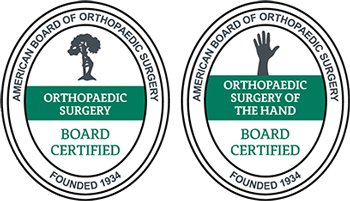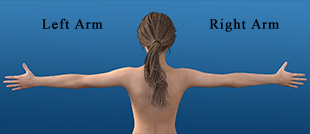Reconstructive Wrist Surgery
What is Reconstructive Wrist Surgery?
Reconstructive wrist surgery is needed when trauma, a development abnormality or disease has led to pain or limitation of function.
Reconstructive wrist surgery for traumatic cases can involve simple repair of an injured structure to reattachment of the severed limb, to actually transplanting a portion of the limb such as a muscle or skin flap from the forearm or another area of the body to cover the wrist structures. Frequently, this involves the repair of a skin laceration but may involve the repair of a more serious injury such as a tendon, nerve, or artery laceration. Fractures are also very common usually involving the distal radius or scaphoid and frequently are separated or displaced requiring surgical repair with plates or screws.
Common Injuries Treated
Triangular cartilage tears in the wrist are very common particularly in athletes. Through arthroscopic surgery, this is usually removed but can be repaired occasionally with a quick recovery. Ligament tears have a golden period of three months to treat with arthroscopic intervention with a high success rate. In some cases, the ligament can be restored with a tendon. If chronic instability occurs, then a fusion or knitting together of two or more bones may be necessary.
In traumatic arthritis of the wrist, the goal is to perform a partial fusion or arthrodesis to preserve as much movement as possible even if additional surgery is necessary later to fuse the entire wrist stiff.
Reconstructive wrist surgery is frequently performed in the partially paralyzed limb by re-routing tendons to restore the missing function or in some cases fusing the wrist when there are no expendable tendons. Paralysis can occur from a pinched nerve following a fracture in the arm with a radial nerve injury or following an injury to the brachial plexus or cervical spine.
Reconstructive wrist surgery is performed in disease condition such as Rheumatoid wrist deformities through joint fusions and joint replacement to restore function and improve appearance. Usually a fusion is preferred but when bilateral disease is present one may be fused and the other replaced.
Reconstructive wrist surgery is also usually necessary to correct congenital malformations such as radial or ulnar club hands, Madelung’s deformity, or cerebral pasly.
Tumors may be devastating to a wrist such as osteochondroma leading to a growth disturbance or a malignancy leading to destruction of a wrist. Reconstruction may require simple excision of a benign lesion or an amputation or limb salvage procedure in more aggressive cancerous lesions.
Burns to the back of the hand can lead to extensive tissue loss exposing tendons. These cases will require more than a skin graft as in the form of a transplanted free flap from the upper arm or back to cover and preserve tendon function. This tissue involves restoration of the circulation to the flap through a microvascular repair of the artery and veins.
Why Dr. Knight?
Reconstructive wrist surgery should be performed by a fellowship trained wrist surgeon with significant expertise in the type of procedure planned. Dr. Knight has performed cutting edge wrist procedures for over 25 years with considerable success. His passion is the treatment of wrist problems and his experience is extensive.

(817) 382-6789
Disclaimer
HandAndWristInstitute.com does not offer medical advice. The information presented here is offered for informational purposes only. Read Disclaimer

























